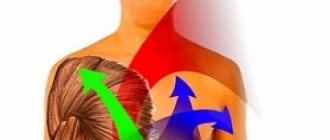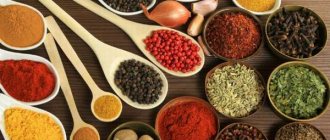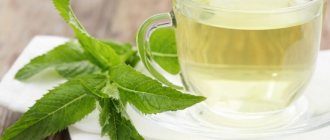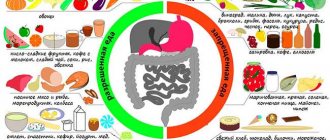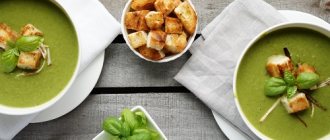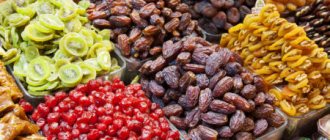Every person needs reasonable physical activity. Even bedridden patients after a stroke begin to perform a set of exercises from a course of breathing exercises already on the 2-3rd day. Knowing this fact, it becomes clear that if you have pancreatitis, you can and should also play sports. The question is which type of physical activity to choose and which workouts to avoid.
Moderate physical activity for pancreatitis will not only do no harm, but will also bring health benefits
Features of the construction of physical activity for pancreatitis
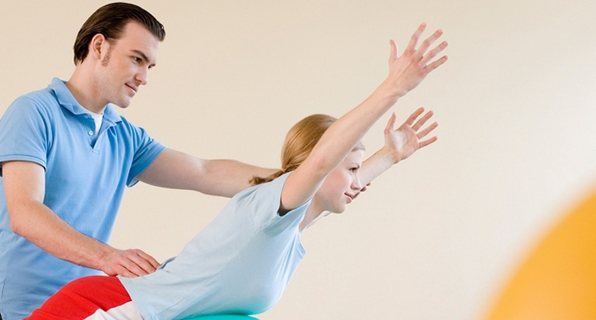
When choosing a type of sports activity, you need to pay attention to a number of factors.
First of all, consider the degree of development and intensity of the disease. In acute forms of pancreatitis, as well as at the stage of exacerbations of the chronic form, most types of physical activity are contraindicated. At such moments, sports and excessive physical activity must be postponed, and preference should be given to the principle of “cold, hunger and rest.”
Age characteristics are also one of the main factors on the basis of which a physical activity program for pancreatitis is formed. It should be noted that some exercises recommended for this disease may be strictly prohibited in the event of the development of other concomitant ailments. Therefore, consultation with specialists is a must.
Sports activities for pancreatitis should be organized in such a way that when forming a program, the current physical characteristics and capabilities of the body that were inherent in the patient before the development of the disease are taken into account. People who previously had high athletic performance can easily bear a significant load, which cannot be said about those who have not previously been actively involved in sports.
An individual approach to each patient is a vital condition for selecting an effective and safe sports program.
Sports nutrition for pancreatitis
To make exercise more effective, you need to carefully monitor your diet. Diet for pancreatitis is an essential component of recovery. There are several basic principles, the violation of which can lead to the resumption of the inflammatory process in the organ:
- Quitting alcoholic beverages and smoking.
- Fractional meals from 6 to 8 meals per day.
- The food is served pureed through a sieve or crushed using a blender.
- It is preferable to boil or steam it.
- Food should be fresh and warm at the time of consumption.
Sports nutrition has its own characteristics. This menu contains more proteins, which, compared to fats, are not stored by the body. In the chronic form of pancreatic disease, sports nutrition consists mainly of animal proteins, which are easily digestible. A menu with an emphasis on them will contribute to the rapid regeneration of damaged organ tissue.
In addition to protein, the diet must include cereals and cereals. It is recommended to cook porridge in water, without adding milk. Nutritionists advise not to avoid lean meats, dried bread, boiled lean fish, vegetarian soups, vegetables and fruits, milk with a minimum percentage of fat, weakly brewed tea, steamed egg white omelette and other low-fat foods.
Recommended sports for inflammatory processes
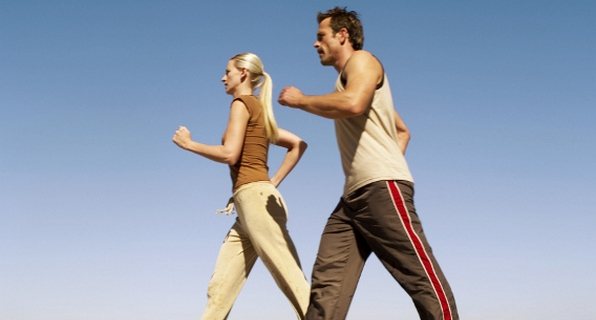
Answering the question “is it possible to play sports with pancreatitis,” the vast majority of experts talk about the need for some gradation of sports, on the basis of which lists of permitted and not recommended sets of exercises are formed.
During periods when there is a certain decline in the symptoms of chronic inflammatory processes, participation in a number of sports disciplines is allowed and even necessary.
The load that falls on the body during physical therapy exercises must be “applied” in doses. At the same time, it is recommended to carry out various types of exercises under the supervision of specialists who can record the results and gradually add load to an adequate level.
The development of physical therapy exercises for patients with pancreatitis should be carried out by a qualified specialist based on an analysis of the individual state of the body of each patient separately. Such an individual approach allows you to easily overcome possible problems arising from an increased level of physical activity.
The exercises included in the course of breathing exercises have virtually no contraindications and are applicable to all categories of patients, regardless of age.
Swimming for pancreatitis, subject to a number of circumstances, can be recommended for patients, since it is this kind of physical activity that gives the most positive effect for the whole body.
In addition to swimming, the set of recommended exercises may include elements from yoga or Nordic walking, as well as exercises for the back muscles, abs, arms and legs.
Exercising with pancreatitis
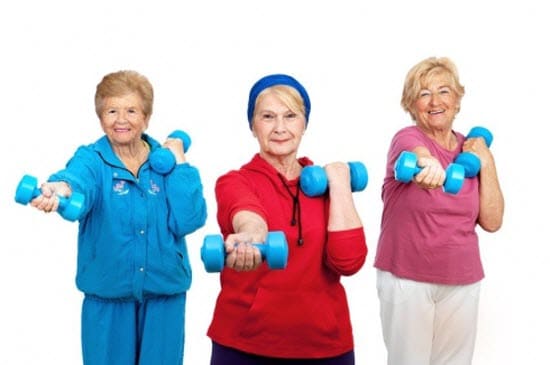
Pancreatitis and physical activity expressed in jumping, jerky and/or shaking movements are unacceptable. Therefore, taboos include seemingly peaceful running, jumping in place and jumping rope, strength training, etc. The fact is that such movements can provoke a concussion of the organ, which in turn will lead to the triggering of the inflammatory process mechanism.
Lifestyle, in addition to sports, also includes the following components of successful restoration of pancreatic function:
- It is recommended to avoid nervous shocks and stress.
- A good night's sleep is essential.
- About a third of the day should be allocated for rest, both moderately active and passive.
Doctors impose a ban on any sport in a professional form, as the loads are high. The gland that has become inflamed now requires careful treatment and rest. But this does not mean that physical activity has no place in the life of patients diagnosed with pancreatitis. Limiting exercise should only occur during an exacerbation of a chronic disease or an acute attack. Upon achieving remission, you should not shy away from physical therapy, the purpose of which is:
- Strengthen the nervous system exhausted by inflammation;
- Provide a general tonic effect;
- Normalize the psychological state;
- Speed up metabolism;
- Improve blood circulation in the abdominal organs.
One of the most effective techniques is the so-called diaphragmatic breathing. During breathing exercises, self-massage of internal organs, including the pancreas, is performed. “Lower breathing,” as it is otherwise called abdominal breathing, allows you to breathe correctly, namely slowly and deeply. Few people know that children breathe this way from birth. As one grows and develops, and also due to the rhythm of life, the environment and tight clothing, a person begins to breathe differently - through the chest. Breathing becomes shallow, which leads to shortness of breath, cardiac dysfunction, hypoxia, deterioration of metabolism and contributes to obesity.
Physical therapy also includes exercises aimed at the abdominals, torso, arms and legs. The load should be gradual. The number of approaches is consistently increased. Strength exercises are undesirable due to the risk of increasing blood pressure (abdominal and arterial).
- All actions are performed slowly or at an average pace.
- The duration of the lesson is no more than 20 minutes.
- Multiplicity – daily.
- The optimal time is 1.4 hours after finishing a meal.
- The best place for exercise is a well-ventilated room.
Pancreatitis is often accompanied by other chronic pathologies. To take into account all risk factors, a set of exercises must be compiled by a qualified specialist, taking into account the clinical picture of the patient.

At the end of the exercises, it is advisable to lie quietly on your back for about five minutes. Place your arms along your body, turn your palms down, and spread your legs slightly. To completely relax, close your eyes. At the discretion of the doctor, dousing, wiping, or a contrast shower are possible afterward.
Walking has worked well. If you walk one to two kilometers outdoors at your own pace every day, your pancreas will also thank you!
Dangerous sports for the body
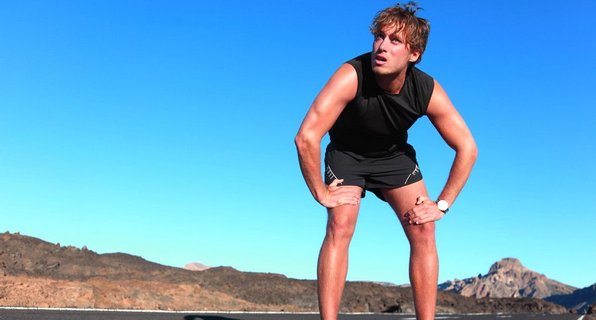
It is safe to say that most sports that involve significant stress on the human body are either completely banned or subject to significant restrictions during the course of the disease.
Thus, we can say that pancreatitis and boxing, especially in the acute form or during an exacerbation, are categorically incompatible. The reason for this is the difficult training process, as well as the constant heavy and sharp blows that athletes who choose this sport are exposed to.
When answering the question of many patients “is it possible to run with pancreatitis,” most experts answer in the negative, since running involves sudden movements that have a negative effect on pancreatic tissue. Moderate walking and walking are more beneficial.
Is it possible to lift weights with pancreatitis? Another frequently asked question, the answer to which cannot be unambiguous, since it depends on the general condition of the body, although there is a general recommendation for possible avoidance of such actions.
Fitness for pancreatitis also often falls into the category of prohibited sports disciplines that can have a negative impact on the clinical picture and further development of the disease.
At the same time, it is necessary to take into account that each case of the disease is individual, since the reaction of the body of different people, even under the same conditions, can be unpredictable. That is why decisions on whether to allow or prohibit certain sports or exercises should remain with the attending physician.
Diet Requirements
Diet for people with pancreatitis, especially if they exercise, is key. Essentially it is a matter of their survival.
First of all, you will have to give up bad habits. It is recommended to eat meals in small portions, 6-7 times a day. Food should be chopped, boiled, steamed. The body really needs easily digestible proteins of animal origin. They help restore damaged pancreatic tissue. If animal fats are poorly digestible, soy protein completely replaces them.
| Recommendations | Products |
| Useful | porridge boiled in water (especially buckwheat, oatmeal), dietary meat (chicken, turkey, rabbit, lean beef), vegetable soups, lean fish, steamed omelet, weak tea. Experienced athletes assure that beef cannot be excluded from the diet. It contains a vital complex of minerals and protein. |
| Harmful | fatty, spicy, fried foods, meat and fish broths, smoked meats, mushrooms, coffee, spices, alcohol, sour fruits and berries (lemon, some varieties of apples, cranberries). |
Important: playing sports with pancreatitis is not contraindicated if you follow the general rules: avoid stress, follow a sleep and rest schedule, and diet. If pancreatitis is accompanied by other diseases (for example, it often occurs with cholecystitis), it is wiser to seek advice about physical activity from your doctor.
Pancreatitis is an inflammation of the pancreas, the treatment of which requires the use of replacement therapy, adherence to a daily routine, dietary nutrition, and limitation of physical activity. Playing sports with pathologies of the digestive system is not contraindicated, but there are a number of restrictions. Therefore, it is important to consider the question of what physical activity is safe for pancreatitis.
Cases of a categorical ban on sports for patients
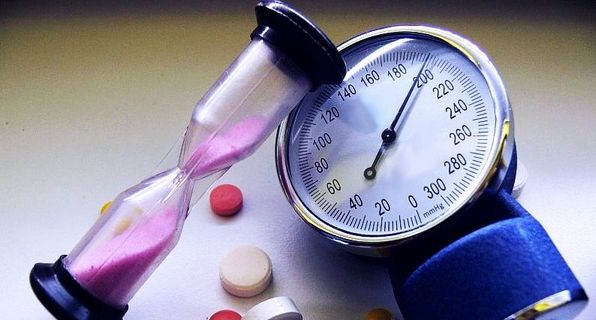
In some cases, playing sports in any form can cause the disease to develop and progress to a more severe stage. That is why doctors in some situations prohibit patients from any physical activity.
The list of such conditions includes:
- periods of exacerbation, as well as acute forms of pancreatitis;
- concomitant diseases that affect internal organs;
- periods after injuries to the pancreas;
- rehabilitation periods after surgery.
When choosing the type of load, it is necessary to take into account that with this disease, performing exercises associated with sudden movement, jumping, jumping or lifting weights is prohibited.
Based on this, we can say that running exercises, as well as long or high jumps and strength aerobics, should be abandoned until recovery or improvement of the clinical situation.
In general, depending on the individual characteristics of the body, each sport should be discussed with the attending physician, who will help speed up the rehabilitation process and return to the normal training process.
Important Tips
Almost all experts agree that physical activity during pancreatitis cannot be avoided. However, they must be moderate and correct. The load program is selected strictly individually. As a rule, physical exercises for patients with pancreatitis focus on the muscles of the arms and legs. This will not affect the pancreas in any way.
The specified set of exercises must be performed regularly. It is best to do them for 5-10 minutes, depending on the type, 3 times a day. You need to start exercising an hour after eating. The next dose can be taken approximately 40 minutes after completion.
The selected system should not include tilts and sharp turns; all movements should be as smooth as possible, but at the same time quite energetic. It is recommended to monitor the condition of your own body while performing certain exercises. If you suddenly experience shortness of breath, pain, an incomprehensible feeling of heaviness, or excessive fatigue, you must stop the procedure immediately.
It is necessary to approach sports responsibly and seriously. During sports procedures, you need to turn on positive and rhythmic music, which allows you to get a charge of energy and vigor. Pancreatitis should not make the patient’s life boring and monotonous. Small amounts of physical activity should be present in the daily routine of a person suffering from this difficult illness.
Pancreatitis is a group of diseases in which inflammation of the pancreas occurs. The “trigger” of pancreatitis is, for example, cholecystitis, cholelithiasis, as well as hereditary predisposition, alcohol, and uncontrolled use of antibiotics.
There are acute and chronic forms of pancreatitis. The acute form requires serious treatment in a hospital, a strict diet and rest. And the question of whether it is possible to play sports in such a state disappears by itself.
Chronic pancreatitis, when the disease is lurking, you take medications and feel almost okay, requires a balanced approach. Is it possible to play sports with chronic pancreatitis? Most doctors will confidently answer “yes.” Because exercise:
- improve the general condition of the body and nervous system;
- accelerate metabolism, promote appetite;
- normalize blood flow in the abdominal organs and more;
- specially selected exercises massage the pancreas, improving its functioning.
Are any sports activities recommended? The answer is no. Physical activity for pancreatitis must be carefully selected and dosed. And the general recommendations that experts give are adjusted to your own condition, age, and capabilities. The main rule is to listen to yourself, your body, do not force it, do not harm it.
Exercise in the gym and bodybuilding for pancreatitis
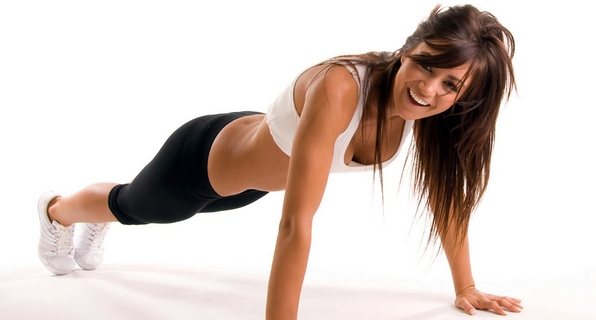
Nowadays, the culture of a beautiful body is experiencing a real renaissance, so every day there are more and more visitors to gyms.
It should be noted that for the effectiveness and safety of the training process, the training program must be developed by a specialist in this field and approved by a doctor who is familiar with the individual characteristics of a particular person’s body.
There are many myths about the impact of exercise in the gym on the human body, so many are interested in the compatibility of the concepts of pancreatitis and bodybuilding.
It should be noted that some representatives of this sport, without complete information about pancreatitis, insist that bodybuilding has a beneficial effect on the human body, explaining this by strengthening the muscle belt in the abdominal area, as well as the presence of a large amount of protein in the diet of professional athletes.
At the same time, the situation is somewhat different, and lies in certain factors.
- People who are serious about bodybuilding do eat large amounts of protein as it is essential for the muscle growth process. Protein, in turn, is also the main building material for the restoration of damaged pancreatic tissue, as well as stimulating the processes of hormone synthesis. In such a situation, the beneficial effect of consuming protein for pancreatitis and parallel bodybuilding exercises for the pancreas is significantly reduced or even approaches zero.
- The presence of a protein shake, bar, or other types of sports nutrition in the daily diet can have a negative effect on the body of a person suffering from pancreatitis.
- The high intensity of physical activity, which is what bodybuilding is characterized by, can cause an exacerbation of the disease, against the background of constant kinks of the gland ducts, as well as increased intra-abdominal pressure.
The gym with pancreatitis can cause serious problems that arise due to insufficient insulin.
This is due to the fact that bodybuilding requires additional production of insulin by the body, which is responsible for the breakdown of glucose, which is the main source of energy. The increased need in this case occurs against the background of a serious malfunction in the main source of insulin - the pancreas, which can become an additional reason for its depletion.
Patients who suffer from pancreatitis, who decide to go to the gym for the first time against the background of such problems, are making a serious mistake, since in such a situation the occurrence of an exacerbation of the disease is almost guaranteed.
For those who have devoted their whole lives to intensive training in the gym, there are certain exceptions that allow you to engage in bodybuilding even during the course of the disease, while using minimal loads at first, with regular monitoring of glucose levels, as well as other indicators characterizing the functioning of the pancreas .
High calorie protein shakes
For a patient with pancreatitis, the use of high-calorie cocktails is allowed only after achieving a stable long-term remission. The doctor allows the use of cocktails for sports nutrition if the patient is not bothered by complaints of abdominal pain, there is no nausea, vomiting, or bowel problems.
In addition, to resolve protein in pancreatitis, the indicators of a general, biochemical blood test, and coprogram must be within normal limits. When conducting an ultrasound examination of the abdominal organs, there should be no signs of inflammatory changes in the pancreas or its ducts; the gallbladder and bile ducts should be normal. And also, ultrasound symptoms of stagnation of bile, pancreatic juice, and signs of cholelithiasis should not be detected.
Recipes for approved cocktails
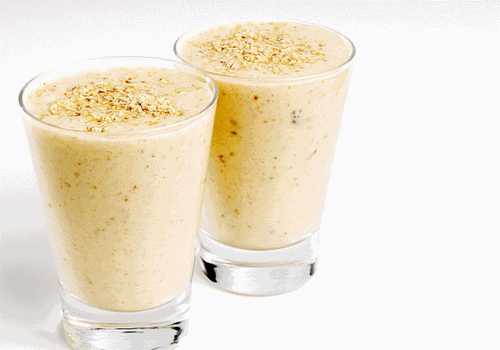
In order to be confident in the natural, healthy composition of a protein shake, it is better to prepare it yourself at home from high-quality products, after consulting with your doctor. You can make a healthy drink rich in proteins, vitamins and minerals using simple recipes:
- Boil oatmeal (half a glass), mix it with chopped banana, add half a glass of low-fat cottage cheese and pour half a liter of whey over it all. Beat the resulting mixture with a blender until smooth.
- Mix homemade low-fat yogurt with pre-baked apple and cooked buckwheat as much as possible. The consistency of such a cocktail should be homogeneous: the mixture is whipped with a blender.
Features of bodybuilding
Intense physical exercise is contraindicated for patients with pancreatitis. Therefore, doctors strongly recommend giving up bodybuilding. However, it is possible to create a beautiful body with the help of lightweight training:
- eliminate heavy weight lifts;
- the working weight should be reduced by half compared to that used before pancreatitis;
- increase the break between approaches;
- exclude exercises that cause discomfort;
- reduce the number of repetitions;
- use exercises that involve working with your own weight.

